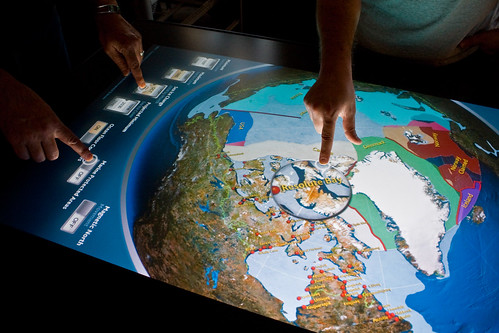Quick post:

Photo credit: Ideum
RELATED
Ideum Blog
OpenExhibits Free multitouch and multiuser software initiative for museums, education, nonprofits, and students
GestureWorks Multi-touch authoring for Windows 8 & Windows 7
Ideum's GestureWorks Platform Will Let Developers Create Complex Gestures for Ultrabook Apps -Alex Williams, Tech Crunch, 11/18/12
5 Perspectives On The Future Of The Human Interface -Alex Williams, Tech Crunch, 11/4/12
NUI Group
More to come!
"GML is an extensible markup language used to define gestures that describe interactive object behavior and the relationships between objects in an application. Gesture Markup Language has been designed to enhance the development of multiuser multi-touch and other HCI device driven applications." -Gesture ML Wiki
GestureML was created and maintained by Ideum.
More information to come!

Photo credit: Ideum
RELATED
Ideum Blog
OpenExhibits Free multitouch and multiuser software initiative for museums, education, nonprofits, and students
GestureWorks Multi-touch authoring for Windows 8 & Windows 7
Ideum's GestureWorks Platform Will Let Developers Create Complex Gestures for Ultrabook Apps -Alex Williams, Tech Crunch, 11/18/12
5 Perspectives On The Future Of The Human Interface -Alex Williams, Tech Crunch, 11/4/12
NUI Group
More to come!







